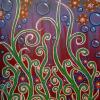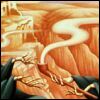How much and what brand of butyrate are people using here? Is Nutricology, ButyrAid OK?

HDAC Inhibition Main Discussion - memory enhancement, fear extinction, addictive behavior cessation, and more
#31
Posted 15 December 2016 - 08:05 PM
#32
Posted 25 December 2016 - 05:46 PM
i read that acetyl carnitine increases histone acetylation. i wonder what effect it would have in combination with Vorinostat. thoughts anyone?
https://www.ncbi.nlm...pubmed/19755853
#33
Posted 17 June 2017 - 12:21 AM
Musicman, any updates on HDACi's? Been enjoying these posts, both on Longecity and Reddit.
For what it's worth, I'm on another round of butyrate for the purpose of alcohol cessation, to great effects..
Musicman, do HDACi's have effects on habit formation? I seem to recall that they did but can't seem to find much info on it now.
#34
Posted 07 March 2019 - 12:02 PM
very good thread. we need updates! from what i can gather the only active member of this forum still present from this thread is tolerant. so i have to ask him or if anyone new wants to contribute, how is vorinostat going for you if you ever used it at all? any updates on new HDAC inhibitors, preferably easy to acquire natural products?? because vorinostat is very difficult to buy :( but if someone knows a source, msg me ![]()
Edited by GABAergic, 07 March 2019 - 12:03 PM.
#35
Posted 08 August 2020 - 08:30 PM
Bumping, who tried?
#36
Posted 09 August 2020 - 12:15 PM
I looked at results in pubmed for keyword "hdac inhibitor", found a few interesting ones, maybe these substances would be more accessible than synthetic ones.
Mechanistically, the effect of resveratrol on microtubule regulation and intracellular transport was dependent on peroxisome proliferator-activated receptor-γ signaling and its ability to act as a pan-histone deacetylase (HDAC) inhibitor
https://pubmed.ncbi....h.gov/32267731/
Rhein, a novel Histone Deacetylase (HDAC) inhibitor with antifibrotic potency in human myocardial fibrosis
https://pubmed.ncbi....h.gov/32184434/
Rhein (cassic acid) is in rhubarb: https://en.wikipedia...hein_(molecule)
GABA
γ-Aminobutyric acid (GABA) possesses extensive physiological functions and can be directly obtained from foods. GABA-enriched functional foods have been developed and the commercial demands for GABA are increasing. GABA is widely recognized as a central nervous system inhibitory neurotransmitter and plays an important role in some diseases by binding to its receptors. However, some of the functions of GABA are not explained by neurotransmission or GABA receptor pathways. Therefore, this study investigates whether GABA has the potential to inhibit histone deacetylase (HDAC).
Conclusion: A novel role for GABA is demonstrated in which it acts as an HDAC inhibitor. The present study expands the horizons for exploring the non-neurotransmitter functions of GABA.
https://pubmed.ncbi....h.gov/31090246/
Could supplements with pure GABA be actually worth something? I read it doesn't pass blood brain barrier but maybe it could be used as an accessible HDAC inhibitor.
L-Carnitine
L-carnitine is an endogenous HDAC inhibitor selectively inhibiting cancer cell growth in vivo and in vitro
https://pubmed.ncbi....h.gov/23139833/
Sodium butyrate was already known hdac inhibitor, altough I read on other longecity thread someone wrote it's half life is in minutes and binding affinity is weak. However, I see a study where it's used intranasally: https://pubmed.ncbi....h.gov/32124940/
Sodium butyrate is also sold on the market quite cheap. I wonder if anyone tried snorting sodium butyrate?
Tributyrin, a butyrate prodrug that can inhibit histone deacetylase (HDAC) activity, attenuates hepatic steatosis and injury
https://pubmed.ncbi....h.gov/31654770/
Butter butter butter! https://en.wikipedia...wiki/Tributyrin
A Derivative of Butyric Acid
Like butyric acid, BA-NH-NH-BA functioned as a histone deacetylase (HDAC) inhibitor by inducing the acetylation of Histone H3 lysine 9 (AcH3K9) in human keratinocytes.
https://pubmed.ncbi....h.gov/31159213/
Sulforaphane
Results showed that sulforaphane inhibited cell growth and induced autophagy in MDA-MB-231, BT549 and MDA-MB-468 cells. Further study demonstrated that sulforaphane induced autophagy by down-regulating expression of HDAC6, which resulted in increased membrane translocation and acetylation modification of phosphatase and tensin homolog (PTEN)
https://pubmed.ncbi....h.gov/30352240/
https://pubmed.ncbi....h.gov/30026053/
Gallic acid
... The aim of this study was to determine and compare the effects of well-known HDAC inhibitors (TMP269, panobinostat, and MC1568), phytochemicals (gallic acid, sulforaphane, and piceatannol), and anti-hypertensive drugs (losartan, carvedilol, and furosemide) on activities of class IIa HDACs (HDAC4, 5, 7, and 9). ... Among the three phytochemicals, gallic acid showed remarkable inhibition, whereas sulforaphane presented mild inhibition of class IIa HDACs. Piceatannol inhibited only HDAC7 activity. ... Gallic acid weakly inhibited HDAC1 and HDAC6 activities, but strongly inhibited HDAC8 activity with effectiveness comparable to that of trichostatin A. Inhibition of HDAC2 activity by sulforaphane was stronger than that by piceatnnaol. These results indicated that gallic acid is a powerful dietary inhibitor of HDAC8 and class IIa/b HDAC activities. Sulforaphane may also be used as a dietary inhibitor of HDAC2 and class IIa HDAC. ...
https://pubmed.ncbi....h.gov/29482060/
Berberine
Moreover, mechanistic analyses demonstrated that BBR was effective at inhibiting the expression of class I HDAC, but not class II, in SEB-stimulated splenocytes
https://pubmed.ncbi....h.gov/30276552/
Kaempferol
Kaempferol, a flavonoid, found in traditional medicine, fruits, and vegetables, and an HDAC inhibitor, is a powerful anti-cancer reagent against various cancer cell lines
https://pubmed.ncbi....h.gov/30158521/
Cyl-1 from Cylindrocladium scoparium
Total synthesis of the natural HDAC inhibitor Cyl-1
https://pubmed.ncbi....h.gov/29687119/
Dihydrocoumarin
"Dihydrocoumarin is commonly used as a flavor ingredient in food and cosmetic industry. It occurs naturally in Melilotus officinalis (sweet clover)" (link)
Dihydrocoumarin, an HDAC Inhibitor, Increases DNA Damage Sensitivity by Inhibiting Rad52
https://pubmed.ncbi....h.gov/29215575/
The abstract of the study does sound like something that shouldn't be tried though.
Cinnamon
https://pubmed.ncbi....h.gov/29142427/ Cinnamaldehyde, Cinnamic Acid, and Cinnamyl Alcohol, the Bioactives of Cinnamomum cassia Exhibit HDAC8 Inhibitory Activity
Curcumin
https://pubmed.ncbi....h.gov/29141538/ Curcumin inhibits HDAC activity, and down-regulates the expression of HDAC types 1, 2, 3, 4, 5, 6, 8 and 11 in different cancer cell lines and mice, while the activity and expression of HDAC2 have been reported to be up-regulated by curcumin in COPD and heart failure models.
Diallyl trisulfides
Diallyl trisulfides, a natural histone deacetylase inhibitor, attenuate HIF-1α synthesis, and decreases breast cancer metastasis
EGCG
ELISA assay with bone marrow cell lysates showed EGCG as an inhibitor of HDAC activity and DNase accessibility assay showed EGCG treatment increased the accessibility of chromatin to the enzyme. The results suggest EGCG provides mitigation against radiation injury to the hemopoietic system of mice and also inhibits HDAC enzyme activity.
https://pubmed.ncbi....h.gov/28107697/
https://pubmed.ncbi....h.gov/25452172/
Apigenin
Taking these facts into consideration the current article focused on plant-derived HDAC inhibitor Apigenin and its marvelous role in prostate cancer therapy
https://pubmed.ncbi....h.gov/27930986/
Studies of PC-3 xenografts in athymic nude mice further demonstrated that oral intake of apigenin at doses of 20 and 50 µg/mouse/d over an 8-wk period resulted in a marked reduction in tumor growth, HDAC activity, and HDAC1 and HDAC3 protein expression at both doses of apigenin
https://pubmed.ncbi....h.gov/22006862/
Hydnophytum formicarum Jack
https://pubmed.ncbi....h.gov/24053181/ The rhizome of Hydnophytum formicarum Jack., a medicinal plant known in Thai as Hua-Roi-Roo, has been used in Thai traditional herbal medicine for treatment of cancer. We assessed the ability of its ethanolic and phenolic-rich extracts and its major phenolic compound, sinapinic acid, possessing histone deacetylase (HDAC) inhibitory activity to inhibit proliferation of 5 human cancer cell lines.
Thymoquinone (Nigella Sativa oil extract)
We have recently shown that thymoquinone (Tq), the major constituent of Nigella sativa oil extract, induced apoptosis and inhibited proliferation in PDA cells. Tq also increased p21 WAF1 expression, inhibited histone deacetylase (HDAC) activity, and induced histone hyperacetylation
https://pubmed.ncbi....h.gov/19768141/
Psammaplin A
A natural histone deacetylase inhibitor, Psammaplin A, induces cell cycle arrest and apoptosis in human endometrial cancer cells
https://pubmed.ncbi....h.gov/17920664/
Psammaplin A is a natural prodrug that inhibits class I histone deacetylase
https://www.nature.c...ticles/emm20076
Spirulina platensis
Our results suggest that SPE increased global histone H3 acetylation by facilitating HDAC protein degradation, but decreases histone H3K9/K14 acetylation and p65 binding at the promoters of Il-1β and Tnfα to exert its anti-inflammatory effect.
https://pubmed.ncbi....h.gov/27338466/
Spiruchostatin B (can be isolated from a single gram negative bacteria (wiki), although don't think would be relevant for us)
https://pubmed.ncbi....h.gov/27108737/ Spiruchostatin B (SP-B), is a potent histone deacetylase (HDAC) inhibitor, in addition to HDAC inhibition, the pharmacological effects of SP-B are also attributed to its ability to produce intracellular reactive oxygen species (ROS), particularly H2O2
Panax ginseng
Ginsenoside 20(s)-Rh2 as potent natural histone deacetylase inhibitors suppressing the growth of human leukemia cells
20(s)-Rh2 down-regulated HDAC1, HDAC2, HDAC6, increased histone H3 acetylation and HAT activity. Moreover, 20(s)-Rh2 inhibited the growth of human leukemia xenograft tumors in vivo.
https://pubmed.ncbi....h.gov/26482938/
Chrysin
Plant HDAC inhibitor chrysin arrest cell growth and induce p21WAF1 by altering chromatin of STAT response element in A375 cells
https://pubmed.ncbi....h.gov/22591439/ Chrysin cause G1 cell cycle arrest and found to inhibit HDAC-2 and HDAC-8
Lactate
Lactate, a product of glycolytic metabolism, inhibits histone deacetylase activity and promotes changes in gene expression Lactate is a relatively weak inhibitor (IC(50) 40 mM) compared to the established inhibitors trichostatin A and butyrate, but the genes deregulated overlap significantly with those affected by low concentrations of the more potent inhibitors. HDAC inhibition causes significant up and downregulation of genes, but genes that are associated with HDAC proteins are more likely to be upregulated and less likely to be downregulated than would be expected. Our results suggest that the primary effect of HDAC inhibition by endogenous short-chain fatty acids like lactate is to promote gene expression at genes associated with HDAC proteins.
Lacosamide (https://en.wikipedia...wiki/Lacosamide). Side effects look nasty, although I didn't look at it deeper.
Lacosamide reduces HDAC levels in the brain and improves memory: Potential for treatment of Alzheimer's disease
https://pubmed.ncbi....h.gov/25931268/
Could it be something similar to Crebinostat? (Crebinostat: a novel cognitive enhancer that inhibits histone deacetylase activity and modulates chromatin-mediated neuroplasticity https://pubmed.ncbi....h.gov/22771460/)
Questionable (didn't seem to be definitely mentioned as hdac inhibitors, but seemed to be as implied):
https://pubmed.ncbi....h.gov/27588384/
Who would be willing to follow up on each of the substances to look more in depth?
Edited by gintrux, 09 August 2020 - 12:15 PM.
#37
Posted 09 August 2020 - 04:39 PM
Fuckers don't allow me to edit the post...
Lycorine (Amaryllidaceae plant)
Lycorine induces cell-cycle arrest in the G0/G1 phase in K562 cells via HDAC inhibition
These results suggest that inhibition of HDAC activity is responsible for at least part of the induction of cell-cycle arrest in the G0/G1 phase by lycorine and provide a mechanistic framework for further exploring the use of lycorine as a novel antitumor agent.
https://pubmed.ncbi....h.gov/23176676/
Crotonoside is isolated from Chinese medicinal herb, Croton. Crotonoside inhibits FLT3 and HDAC3/6
https://www.medcheme...rotonoside.html
Pomiferin (NSC 5113), a flavonoid from the fruits of Maclura pomifera, acts as an potential inhibitor of HDAC, with an IC50 of 1.05 μM, and also potently inhibits mTOR (IC50, 6.2 µM).
https://www.medcheme.../Pomiferin.html
Gnetol is a phenolic compound isolated from the root of Gnetum ula Brongn. Gnetol potently inhibits COX-1 (IC50 of 0.78 μM) and HDAC
https://www.medcheme...com/gnetol.html
This study has a pretty nice table of a list of natural hdac inhibitors:
https://www.ncbi.nlm...les/PMC6274245/
Also found someone's list on another post: https://www.longecit...ndpost&p=699550
I found thisTable 1Common HDAC, HAT and DNMT modulators derived from natural sources
Natural inhibitor References HDAC Allyl mercaptan Nian et al. (2008) Amamistatin Fennell and Miller (2007) Apicidin Darkin-Rattray et al. (1996) Azumamide E Maulucci et al. (2007) Caffeic acid Waldecker et al. (2008) Chlamydocin Brosch et al. (1995) Chlorogenic acid Bora-Tatar et al. (2009) Cinnamic acid Bora-Tatar et al. (2009) Coumaric/hydroxycinnamic acid Waldecker et al. (2008) Curcumin Bora-Tatar et al. (2009) Depudecin Kwon et al. (1998) Diallyl disulfide Lea et al. (1999) Equol Hong et al. (2004) Flavone Bontempo et al. (2007) Genistein Kikuno et al. (2008) Histacin Haggarty et al. (2003) Isothiocyanates Ma et al. (2006) Largazole Ying et al. (2008) Pomiferin Son et al. (2007) Psammaplin Pina et al. (2003) SAHA (Vorinostat) Richon et al. (1998) S-allylmercaptocysteine Lea et al. (2002) Sulforaphane Myzak et al. (2004) Trapoxin (Kijima et al. 1993) Ursolic acid Chen et al. (2009) Zerumbone Chung et al. (2008) HAT Allspice Lee et al. (2007) Anarcardic acid Balasubramanyam et al. (2003), Ghizzoni et al. (2010) EGCG Choi et al. (2009a) Curcumin Balasubramanyam et al. (2004), Marcu et al. (2006) Gallic acid Choi et al. (2009b) Garcinol Balasubramanyam et al. (2004) Quercetin Ruiz et al. (2007) Sanguinarine Selvi et al. (2009) Plumbagin Ravindra et al. (2009) DNMT Genistein Day et al. (2002) EGCG Fang et al. (2003) Psammaplins Pina et al. (2003) Quercetin, fisetin, myricetin Lee et al. (2005) Caffeic acid Lee and Zhu (2006) Chlorogenic acid Lee and Zhu (2006) Curcumin Moiseeva et al. (2007) Parthenolide Liu et al. (2009) Mahanine Sheikh et al. (2010)SAHA Suberoylanilide hydroxamic acid, EGCG epigallocatechin gallate
#38
Posted 24 October 2024 - 12:28 PM
https://ergo-log.com...ncer-cells.html
https://pubmed.ncbi....h.gov/24466386/
"
The chemical structure of caffeic acid phenethyl ester resembles that of vorinostat, a relatively new anti-cancer medicine. The chemical structure of vorinostat is the lower of the two on the right. Merck has marketed Vorinostat under the name Zolinza since 2006. Given the similarities between the two compounds, the researchers wondered whether the naturally occurring caffeic acid phenethyl ester would work in the same way as vorinostat, which attaches itself to the histone deacetylase enzyme.
"
#39
Posted 25 October 2024 - 04:02 AM
Both editing and deleting the post are not allowed..
W t f
Also tagged with one or more of these keywords: hdac, hdaci, hdac inhibitor, long-term memory, memory, fear extinction, addiction, learning
2 user(s) are reading this topic
0 members, 2 guests, 0 anonymous users

















































